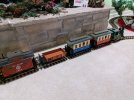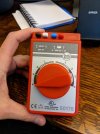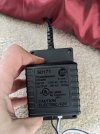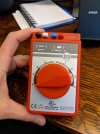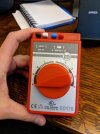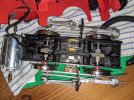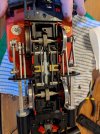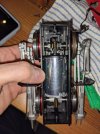AKWeber84
Registered
Newbie here. I bought a starter kit from my son a couple of years ago. Its the same train I had when I was a boy, but my parents gave my train to my nephew, that has nothing to do with my problem but I may be a little bitter about it. Anyway...
Last year I added some LED lights to the cars pulling from the engine, and LED lights in the Caboose pull from the track.
Yesterday the train started driving very slowly. The lights on the train flicker or are dim. I pulled out my meter and checked the power supply which is reading correctly. The AC/DC converter and control knob also appears to be reading correctly. If I do not have the train on the track I get 20 volts on the track. When I put the engine on the track the most voltage I can get is 7/8 volts at ull power. My assumption would be there is an issue with the engine but I don't know where to begin. Has anyone had this issue before or provide any guidance on how to proceed. Thanks for any help you can provide.
EDIT: You guys are so fast at responding! It's 3am (up with my newborn) Give me a few hours and I will update some additional details as requested. What an awesome fourm!
Last year I added some LED lights to the cars pulling from the engine, and LED lights in the Caboose pull from the track.
Yesterday the train started driving very slowly. The lights on the train flicker or are dim. I pulled out my meter and checked the power supply which is reading correctly. The AC/DC converter and control knob also appears to be reading correctly. If I do not have the train on the track I get 20 volts on the track. When I put the engine on the track the most voltage I can get is 7/8 volts at ull power. My assumption would be there is an issue with the engine but I don't know where to begin. Has anyone had this issue before or provide any guidance on how to proceed. Thanks for any help you can provide.
EDIT: You guys are so fast at responding! It's 3am (up with my newborn) Give me a few hours and I will update some additional details as requested. What an awesome fourm!
Attachments
Last edited:

